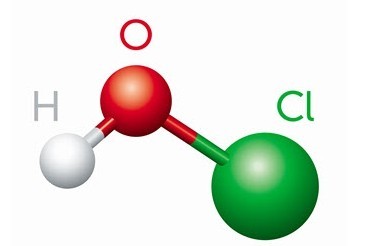
Abstract
Healthcare acquired infections are increasing. Current cleaning and disinfecting (C&D) methods subject staff to toxic chemicals and can be damaging to the facility. Hypochlorous acid (HOCl) is a disinfecting solution that is 80–200 times more effective than bleach in surface disinfection of bacteria yet is nontoxic to humans. The aim of this study was to determine whether HOCl is as effective as standard cleaning methods for C&D GI ambulatory surgery center (ASC) rooms as determined by ATP (adenosine triphosphate) measurements over a 2-week period.
Two similar GI ASCs, each with two procedure rooms, were studied. One ASC received postprocedure STANDARD C&D with quaternary ammonium compounds in nonwoven fabric for surface wiping of high touch areas followed by terminal benzalkonium chloride foam/spray on these areas. The second ASC received HOCl C&D using on-site freshly prepared HOCl, 1,000 ppm. Microfiber cloths semi-wet with HOCl were used for wiping surfaces for both C&D. In the HOCl rooms, after terminal manual wiping, misting with HOCl of the entire room was performed. Selected high touch area ATP testing was performed in all rooms before procedures in the AM and 10 minutes after terminal manual cleaning. In the HOCL rooms, testing was also performed 10 minutes after misting. High touch areas tested in each room included: endoscopic cart (three locations/cart), both gurney bed rails, computer mouse (two), working counters (two areas), light switch, door knob. ATP scores were compared within each site using analysis of means (ANOM).
After terminal cleaning, the average ATP score in the HOCl CLEANING and DISINFECTING study arm was significantly lower than that for the STANDARD CLEANING and DISINFECTING rooms (P < 0.0017) (Figure 1). In evaluating the effect of the HOCl misting, the ATP scores in the HOCl rooms had a post cleaning, pre-misting average score of 2.7. The post misting average score was 1.7, showing that misting produced a further significant reduction (improvement) in ATP scores (P = 0.01).
HOCl cleaning and disinfection in GI ASCs is more effective than standard procedures in lowering ATP scores following endoscopic procedures in procedure rooms. HOCl terminal misting of the rooms further improves the cleaning and disinfecting results.


